Of course, the TV choice depends on the image quality. In turn, image quality depends on the quality of the LED backlight.
As known, LCD pixels do not emit light and require a backlight. LED backlight is most popular in modern TVs. It’s subdivided into Direct LED and Edge LED. Direct LED uses LEDs behind the matrix across its surface, and Edge LED uses LEDs along the perimeter of its side surface. In this case, the light falls on a special splitter, then redirected to the diffuser and dissipates over the surface of the matrix.
Direct LED
The LED strips inside the matrix container are arranged parallel to each other. The distance between the LEDs is 3 to 5 inches, depending on the type of LED strip.
PROS:
– uniform backlight.
CONS:
– relatively large thickness of the matrix.
Uniform backlight requires a high-quality optical diffuser that affects the thickness of the matrix container. Therefore, these models are significantly thicker compared to Edge LED.
Edge LED
Of course, this backlight is the cheapest and easiest. But LEDs for backlight are located at the edges behind the screen. The number and location of LED strips is the main difference. Budget models use only one or two LED stripes on the bottom, top or side. Expensive 4K TVs often have LED stripes on all four edges (all sides configuration).
Typically, companies indicate a backlight configuration – all sides, only on one side (usually on top or bottom) or on two sides (usually on the sides). Of course, all sides configuration is optimal for local dimming and ensures maximum depth and uniformity of the black level on the screen. But today it’s less popular because of the high cost that is due to the large number of LEDs.
PROS:
– thin matrix;
– high brightness;
– low energy consumption.
CONS:
– excessive lighting on the edge of the screen;
– models with Edge LED are expensive compared to Direct LED;
Improved LED backlight
Of course, competition between companies is accompanied by a continuous improvement of technology. Therefore, today manufacturers use various innovative solutions, improving Direct LED and Edge LED. For example, FALD (full-array local dimming) and NANO Full LED are improved versions of Direct LED. LED Plus, in fact, Edge LED with the option of extended local dimming.
Direct LED backlight is used in 9 series of Philips and Sony models. LG TVs of 9 series are also equipped with a Direct LED backlight, but its quality is lower.
LED backlight is always on, and crystals pass light even when closed. Therefore, this technology does not provide the low black level and the high contrast for color transitions (the picture quality is inversely proportional to the black level). This problem is solved by companies with the help of Local Dimming technology that provides independent on/off of individual groups of LEDs in different areas of the screen.
However, over the past few years, the Chinese giant TCL has made a huge leap in the development of this direction, presenting in 2018 TCL 6-Series Roku TV with proprietary Contrast Control Zones technology, 8-Series with mini-LED quantum contrast backlight technology в 2019, and super innovative Vidrian “Glass on LED” technology at CES 2020. This year the company showed the next generation under the name TCL OD-Zero MiniLED. Moreover, at CES 2021, the South Korean giants also showed a huge progress by presenting innovative LG NanoCell QNED TVs, and Samsung Neo QLED TVs with Mini LED backlight.
Pros and cons of the Direct-LED and Edge-LED backlights are perfectly demonstrated on this video.
P.S.
Today Samsung Neo and LG QNED series have actually formed a new segment of premium LCD TVs with quantum dot (QD) technology and miniLED backlit. As known, QD technology expands the color gamut and improves color accuracy by enhancing the white quality for backlight of the RGB layer. Local Dimming with FALD based on mini LEDs enhances the overall image contrast by controlling the light flow in certain frame areas depending on its content. At the same time, high control accuracy is achieved through the use of a huge number of miniature LEDs, grouped into zones of local dimming with separate control.
These two technologies have brought the picture quality of LED TVs to the level of OLED panels. Unfortunately, their price has also reached their level. Today Samsung Neo QN90A and LG QNED90 are competing in premium segment.
However, the Chinese giants are not lagging behind South Korean competitors, taking the lead in the mid-budget segment of LCD miniLED TVs with QD. Their new TCL 6 Series (R646) and Hisense U8G cost $ 1,300 and $ 1,000 for 65-inch models really claim to be among the bestsellers.
Probably, the victorious march of the new miniLED backlit will finally push the Edge-LED backlit into the budget segment.
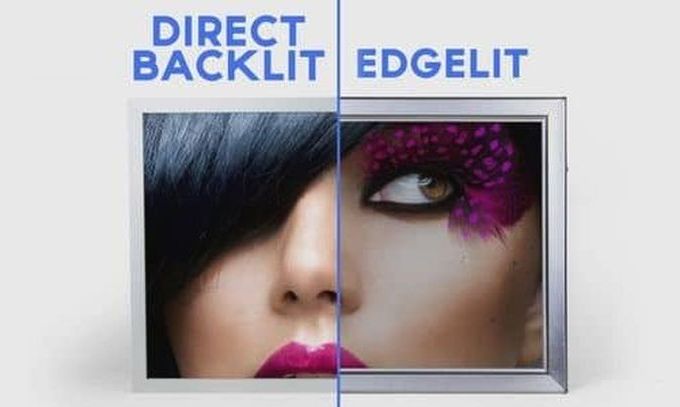
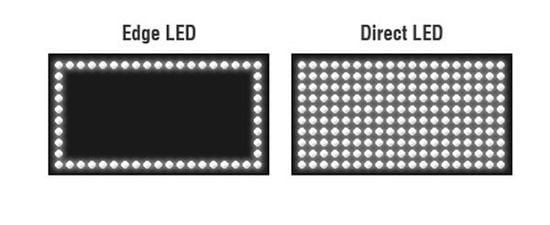
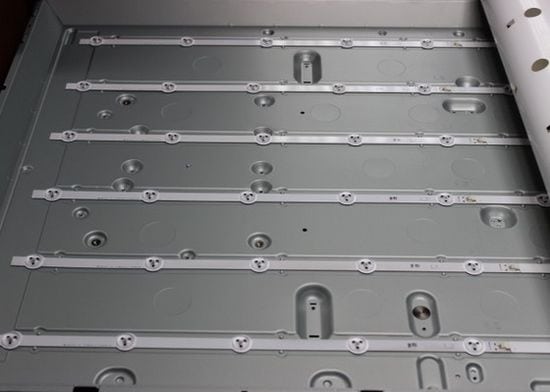
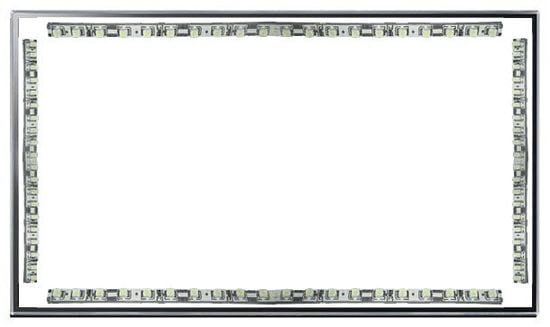
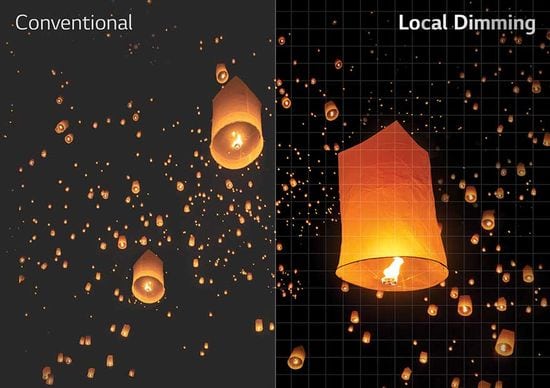
Can you please explain more about the cons and pros of Edge (Sony X850g) versus direct (Sony X800g) backlight? I am not a gamer mostly going to watch TV shows, sometimes movies, YouTube and maybe Netflix. So, in terms of the quality of the backlight systems on both models like their durability in the long run which one do you recommend given they both come with IPS panels? And I do not mind to pay the extra $$$ for x850G if it is really going to worth it taking into account the durability of the backlight system and overall quality. Thank you.
Hi!
Please check this article regarding your question. We have written it today to answer your question:
https://theappliancesreviews.com/what-to-watch-on-the-expensive-4k-hdr-tv/
I was told that KD-55X75H Sony uses direct backlight LED. I noticed that the screen corners area are slightly darker than other places. Is that normal?
Sony KD-55X75H is a good budget model with VA panel with an outstanding contrast ratio (blacks look deep in the dark), which provides up to 400 nit (cd / m²) peak brightness in the 10% window. It uses TRILUMINOS Display (analogue of Samsung’s Quantum Dot, LG’s NanoCell or Hisense’s ULED technologies that improve image quality by improving white quality -theappliancesreviews.com/lcd-tvs-evolution-at-ces-2021-review/).
Unfortunately, VA panel has relatively narrow viewing angles. Indeed, TV uses direct backlight LED with Frame Dimming, and it has some screen uniformity due to the lack of a local dimming feature. The vignetting at the corners can manifest in very bright rooms (a bit of frame dimming in the 2% window).
Additionally, new TVs may have a higher “leak” backlight, which will gradually decrease. In addition, calibration can reduce this effect.
This includes:
– Light Sensor – ON (HOME on the remote> Settings> System settings> ECO (ECO / Light Sensor)> ON;
– backlight reduction and darkening compensation – Options (remote)> Picture (Scene Select> Cinema – warmer picture with a slightly reddish tint).
If the LED Dynamic Control function is present, it must be enabled. But it can be OFF, for example, in case Custom in Picture setting. In this case, you need to switch Custom to Standard in Picture. Also, you can select Advanced Settings in Picture setting and switch LED Dynamic Control from OFF to Standard or High without changing Custom.
Basically, there are other ways to customize. But, unfortunately, they are unlikely to completely eliminate the unevenness in the corners.
In theory, the super-innovative miniLED backlight (theappliancesreviews.com/samsung-neo-qled-mini-led-vs-lg-qned-mini-led-vs-tcl-od-zero-mini-led-at-ces-2021-review/) in new Samsung Neo QLED, LG QNED and TCL OD-Zero TVs will permanently eliminate the uneven backlight problem in LCD TVs.
Pingback: What is Frame Rate, High Dynamic Range, Display Resolution and HDMI 2.1 in TV? - The Appliances Reviews